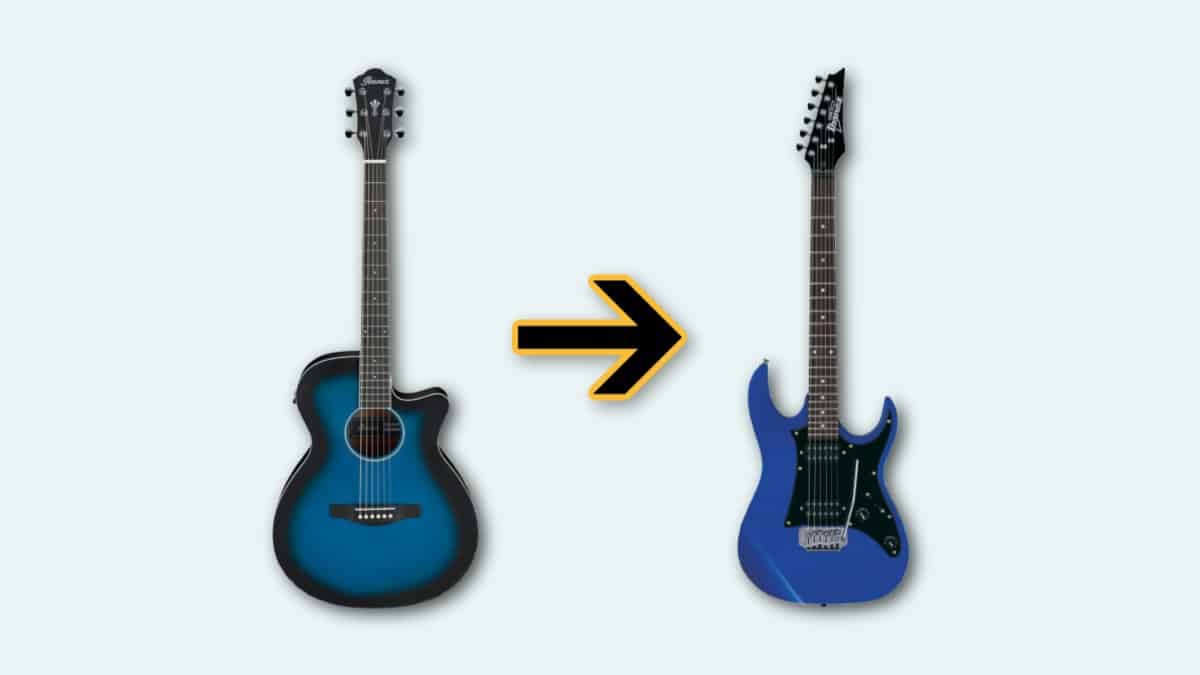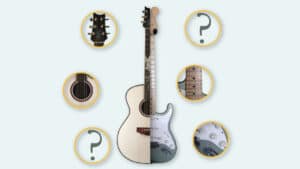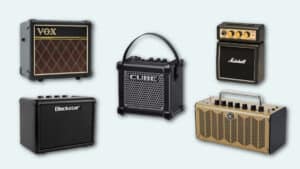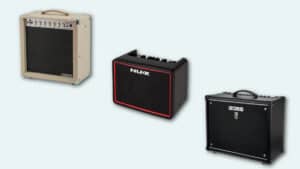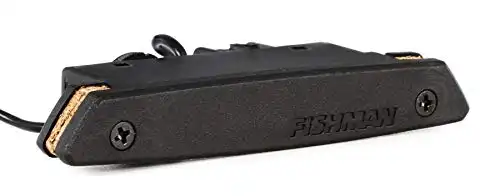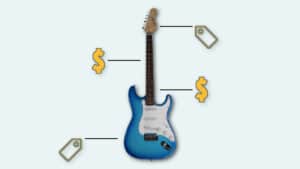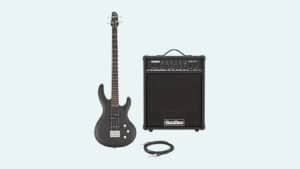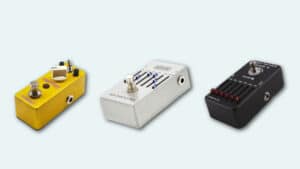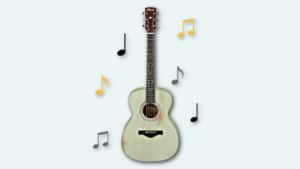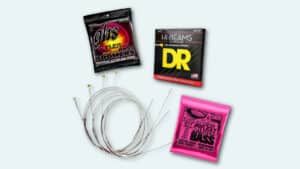How to make an acoustic guitar electric
There are many ways to turn your acoustic guitar into an electric hybrid instrument. The most popular method is to install a pickup system or clip a microphone to the bridge or the body of your guitar. Once you install equipment and turn your acoustic into a hybrid instrument, you can experiment with different techniques. These techniques will further alter the tone into a more electric sound.
I still remember the moment I first cranked up the volume on my electric guitar and heard my epic solo blast through the crowd. But what was really special about that moment is my guitar wasn’t a full electric — it was an acoustic guitar turned hybrid electric.
Once you’ve mastered your acoustic guitar, it’s natural to want to graduate to an electric guitar to experiment with different tones.
Luckily, there are ways to transform your acoustic guitar into an electric one. All you need are a few materials, some passion, and a little creativity.
Why Turn Your Acoustic Into An Electric?
There are many reasons why you may want to make your acoustic guitar electric. More and more acoustic electric hybrids are hitting the market, and with good reason.
Many players want a hybrid instrument for live performances. If you play in a band, your acoustic may need help to cut through the noise of the other instruments in your group.
Acoustic guitars rely on their sound hole for projection. Because of this, there’s no way to crank up the volume – other than strumming hard, which can snap strings.
Thus, some players want a way to amplify their guitars so that the crowd can better hear them.
You may not play live but want to experiment with different sounds and enjoy the versatility of having a hybrid instrument.
In many ways, an acoustic-electric guitar is the best of both worlds. With superior volume and amplification, you can ensure your instrument is heard while also enjoying the freedom of playing your guitar on the go without an amp.
How to Make an Acoustic Guitar Electric: 3 Methods
Some of these are more permanent and easier than others.
The best way to make an acoustic guitar electric is to install a pickup. Still, you can also use a clip-on pickup or a vibration response preamp.
1. Use a Clip-on Pickup
Clip-on pickups are a great tool if you want to avoid making permanent alterations.
These pickups work by clipping onto the body of your guitar – usually by magnets. Then, the device picks up the vibrations from your instrument. After, the clip-on pickup sends the vibrations via cords down to an amplifier.
Once the vibrations enter the amplifier, the amp projects the sound, and voila! You have an amplified guitar.
Still, clip-on pickups don’t do much to alter the tone of your guitar. Thus, your sound will still be much warmer and more acoustic than a sharp, bright electric tone.
Additionally, some of these bad boys can be expensive. You also must ensure that the amp you’re buying is high quality. Low-quality amps can distort and worsen your sound. If you go down this route, expect to dish out a couple hundred dollars.
The clip-on pickup is a great starting point if you’re only looking to amplify your volume.
2. Install a Pickup
Installing a pickup is the best way to transform your acoustic guitar into a hybrid. However, installing a pickup is time-consuming and permanent. This is because you will be drilling holes into the body of your guitar.
If you’re unsure about drilling holes, bring your guitar into a shop to have a professional alter the body.
Once you’ve done that, you can install a pickup. The most popular options are sound hole pickups or piezo pickups.
Both these options come with its benefits and drawbacks. Soundhole pickups are much easier to install, but piezo pickups produce less feedback.
3. Use a Vibration Response Preamp
Vibration response preamps are great if you want a clip-on mic without the wires.
This is a great option because you don’t have to drill any holes like with a traditional pickup. Additionally, you also will avoid getting tangled up in wires like with the clip-on mic.
These preamps work by sticking to your bridge. Then they send the vibrations wirelessly to an amp or to a PA system or through a microphone.
Depending on the model you buy, you can usually have a range of 30 feet and a substantial battery life. The downside? These pieces are on the expensive side.
If you’re looking to experiment with sounds without committing to a heavy installation, a magnetic pickup is an excellent tool to use to get your feet wet. Personally, I love my Fishman Rare Earth Magnetic Pickup because of its rich sound and easy installation.
The Rare Earth Humbucking pickup has been carefully re-voiced and fine-tuned to offer an even smoother treble response than their popular, category-defining predecessors.
How to Turn Acoustic-Electric into Electric Guitar Tone
Okay, you have your hybrid acoustic-electric instrument. Now you may find that you still need to match that coveted electric tone you’re craving.
That’s because installing or clipping on pickups generates volume. But note that these pickups don’t alter the tone of the guitar.
What does this mean? You’re still far away from getting that electric sound with your hybrid instrument.
Fear not! You can still make alterations to reach the tone of a pure electric guitar.
1. Use an Electric Guitar Amp
The first tip is to use an amp designed for electric guitars. Choose these amps rather than an amplifier for acoustic-electric guitars.
Why? Because these amps are designed to amplify the frequencies from electric tones. This, in turn, better emulates the sound of an electric guitar.
Acoustic-electric amps are great if you’re only looking for an amp to further amplify the volume of your acoustic without changing the tone. But if you’re looking for that distorted, crunchy electric sound, go for an electric amp.
The EQ Matters
With electric guitars, it’s all about those bright, crisp, and distorted sounds. How do you transform your acoustic, which has mellow, warm, full sounds, to a more electric sound?
The answer lies in the EQ.
The EQ, or the equalizer, are those knobs on your amp responsible for the different tones and frequencies. If you look at your amp now, you’ll see knobs for bass, treble, and mids.
A fantastic hack to emulate bright electric tones is turning down your bass knobs and turning up the higher treble frequencies. Experiment with the EQ to find a style you like.
2. Use Effect Pedals
By purchasing an effect pedal, you can alter your acoustic guitar sound to whatever you want.
There are many types of effect pedals. The main three are multi-effects, synth, and distortion.
Multi-effect pedals are exactly what they sound like. They contain hundreds of effects within one system.
Multi-effect units can have a bad reputation. Why? These pedals present a steep learning curve.
Since they have so many options, it can be difficult for players to learn. Additionally, these pedals are challenging to adjust while you play. Again, this is due to the pedals’ many options.
For more manageable pedals, synth and distortion pedals are great options. Distortion is a great tool because it produces those fuzzy, dirty electric sounds.
If you’re looking for limitless options of creativity and alterations, a multi-effect is a great pedal. Just remember to be patient while you’re learning the multi-effect.
Delay, Reverb and Compression
Delay, reverb, and compression are great tools to use to emulate electric sounds.
Compression smoothes out your sound by decreasing the volume of harshly plucked strings and boosting the volume of lightly plucked strings. Ultimately, compression balances out the sound to craft a smooth, clean sound.
Delay gives a lot of playback, making notes sound like they’re being played back. Reverb, on the other hand, creates a lively tone.
Noise-Gate Pedals
If you’re adding many effects, a noise gate pedal is a must-have. This pedal cuts signals once the levels drop below a specific level, which cuts down the buzzing or humming you may hear in between playing.
3. Place a Piece of Paper Under the Fretboard
Okay, stay with me because this next suggestion may sound strange. But, if you place a piece of paper under the strings on your fretboard, you can emulate that crunchy tone from an electric guitar.
While it may sound weird, it works. Here’s a video of legend Johnny Cash playing with paper under his fretboard to add oomph to his guitar.
4. Swap Those Strings
When trying to emulate an electric guitar, it’s all about playing those bright, crisp tones. One way to achieve this, even with a full, warm acoustic guitar, is to swap out the strings.
That’s right: electric guitars and acoustic guitars have different strings. That’s why it’s easier for those newer players to play electric for sustained periods because electric strings tend to be softer and hurt your fingers less.
Electric guitars usually come equipped with steel or nickel strings. This produces a brighter tone than acoustic strings, which are usually plated with brass or bronze.
5. Feedback Isn’t Your Friend
Even new players can spot the difference between an acoustic and an electric guitar. An acoustic guitar has a hollow body, and an electric body has a solid body.
The acoustic hollow body amplifies the music you’re playing. But, when plugged into an amp, the hollow body reverberates too much. This reverberation creates nasty-sounding feedback and fuzziness.
Luckily, there’s an easy fix. You can buy a sound hole cover to close your acoustic guitar. This limits the amount of reverberation that occurs inside your guitar.
Rock On With Your Acoustic Electric Hybrid!
The beauty of playing the guitar is there is truly no limit to your creativity. Want to adjust the sound and tone to a crunchier, brighter, and more electric sound? All it takes is a little research, tools, and creativity to make it happen.
Like always, buy quality parts if you plan on making permanent adjustments. If you’re ever in doubt, take your instrument to a professional. There, they can assist with advice and installation.
As for now, grab your hybrid guitar and rock on!
FAQs
How much does it cost to make an acoustic guitar electric?
The exact price depends on the quality of the pieces you buy. It typically costs players anywhere from 100 dollars to 500 dollars. Most of this price is due to the price of buying and installing the pickups. However, there are other pieces of equipment you must buy, like an amp or pedals, if you want different effects.
Can you add electronics to an acoustic guitar?
Yes! You can. The first electronic piece you want to add will be a pickup and an amplifier. Pickups are essential, since this equipment picks up the vibrations from your strings and sends them to the amp.
How do you make an acoustic guitar sound electric with no amp?
If you get creative, there are a few ways to make your acoustic guitar sound more electric. It all has to do with altering the tone to emulate those crisp, sharp tones that electric guitars produce.
You can place a piece of paper under the fretboard (yes, this is a thing). Or you can swap out your acoustic strings for electric strings to get a sharper tone.
Committed to playing both styles? I recommend buying the equipment to make your instrument a hybrid.

